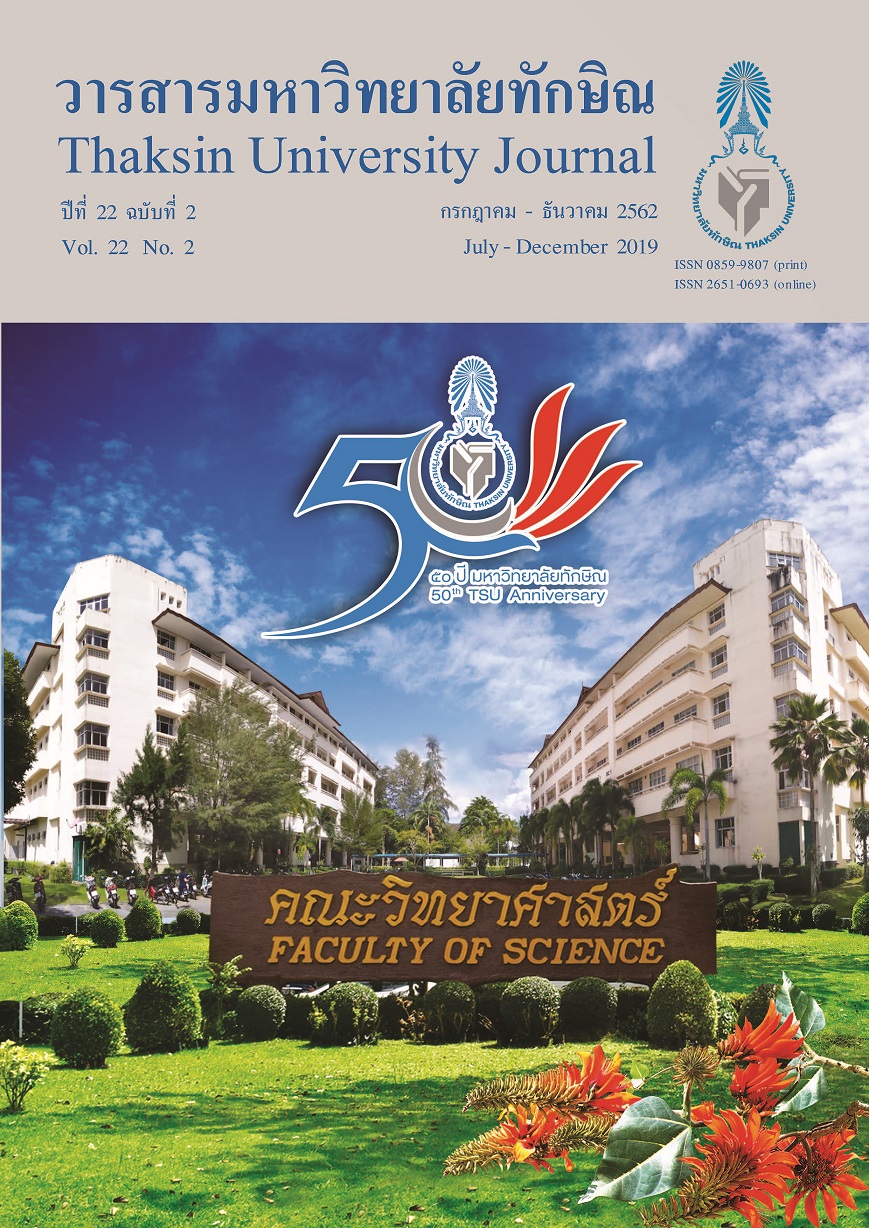Acid Soil Improvement by Ash from Bioelectric Power Plant for Baby Corn Planting Acid Soil Improvement by Ash from Bioelectric Power Plant
Main Article Content
Abstract
Ash from bioelectric power plant (B-ash) is basidic by-product. Thus, using it to correct acid soil compared to calcium hydroxide liming was tried out. Completely randomized design consists of 5 treatments: non-liming, calcium hydroxide liming to raise soil pH to 6.5, B-ash: soil, 1: 4 (v/v), B-ash: soil, 1:2 (v/v) and equivalent to calcium hydroxide adding for raising soil pH to 6.5 was used. Growth, yield and yield components of baby corn in B-ash treatments were higher than calcium hydroxide treatment. B-ash treatments could raise soil pH, decrease exchangeable acidity and exchangeable Al and increase available plant nutrients but decrease extractable Fe. Whereas, trace elements were decreased in calcium hydroxide treatment, especially Fe and Mn. Thus, to prevent over-liming, it should add B-ash for adjusting soil pH to 6.5. B-ash in the rate of 1:4, B-ash:soil (v/v) should be applied to strong acid soil without testing lime requirement of the soil and B-ash equivalent to calcium carbonate.
Article Details

This work is licensed under a Creative Commons Attribution-NonCommercial-NoDerivatives 4.0 International License.
References
Lecturers of Department of Soil Science. (1998). Basic Soil Science. (8th Ed). Bangkok: Department of Soil Science, Faculty of Agriculture, Kasetsart University.
Antoaneta, A. (1995). Effect of Fertilizer Application and Soil pH on the Acidic and Sorption Properties of Maize Leaves and Stems. Bulgarian Journal of Plant Physiology, 21(1), 52-57.
Cakmak, D., Saljnikov, E., Perovic, V., Jaramaz, D., & Mrvic, V. (2010). Effect of Long-term Nitrogen Fertilization on Main Soil Chemical Properties in Cambisol. In The 19th World Congress of Soil Science; Soil Solutions for a Changing World. 291-293. August 1-6, 2010, Brisbane, Australia.
Onthong, J. (2017). Problem Soil. Songkla: Department of Earth Science, Faculty of Natural Resources, Prince of Songkla University.
Braydy, N. C., & Weil, R. R. (2002). The Nature and Properties of Soils. (13th Ed). New Jersey: Macmillan.
Onthong, J. (2004). Soil and Plant Analysis Manual. Department of Earth Science, Faculty of Natural Resources, Prince of Songkla University.
Erich, S. M., & Tsutomu, O. (1992). Titrimetric Determination of Calcium Carbonate Equivalent of Wood Ash. Analysis, 117, 993-995.
Hemwong, S., & Chualsuna, S. (2011). Using of Charcoal to Improve Soil Fertility for Sweet Waxy Corn Production. Journal of Agriculture, 27(3), 253-266.
Bruno, G., Lehmann, J., & Zech, W. (2002). Ameliorating Physical and Chemical Properties and Highly Weathered Soils in the Tropics with Charcoal-a Review. Biology and Fertile of Soils, 35, 219-230.
Mousavi, S. R. (2011). Zinc in Crop Production and Interaction with Phosphorus. Australian Journal of Basic and Applied Science, 5(9), 1503-1509.
Kuntal, D., Raman, D., Shivananda, T. N., & Pintu, S. (2005). Interaction Effect between Phosphorus and Zinc on Their Availability in Soil in Relation to Their Contents in Stevia (Stevia rebaudiana). The Scientific World Journal, 5, 490-495.
Huijun, Z., Liangqi W., Tuanyao, C., Yuxiu, Z., Jinjuan, T., & Shengwen, M. (2012). The Effects of Copper, Manganese and Zinc on Plant Growth and Elemental Accumulation in Manganese-hyperaccumulato Phytolacca. Americana Journal of Plant Physiology, 169, 1243-1252.
Damrongrak, I., & Chelewamachae, R. (2006). Changes of pH, Available Phosphorus and Trace Element after Calcium Hydroxide Liming of Acid Sulphate Soil. Journal of Yala Rajabhat University, 1(1), 21-29.
Damrongrak, I., Onthong, J., & Nilnon, C. (2014). Effect of Soil pH and Some Micronutrient Elements on the Growth and Plant Nutrient Uptake of Para Rubber (Hevea brasiliensis). King Mongkut’s Agricultural Journal, 32(3), 36-44.
Onthong, J., & Osaki, M. 2006. Adaptation of Tropical Plants to Acid Soil. Tropics, 15(4), 337-347.


